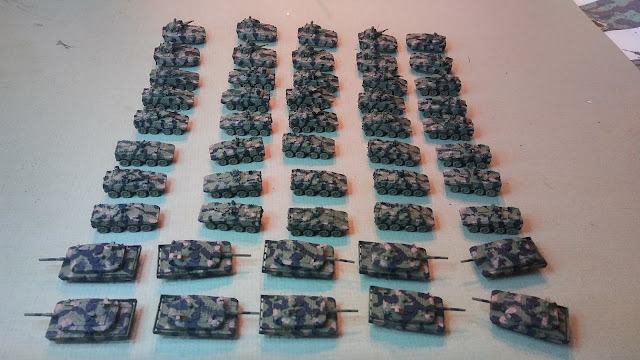Alexander determined who went first each turn. The Macedonian army's deployment was close to historical with the majority of the army deployed across from the left end of the Indian army and some cavalry across from the other end.
The Indians opened the action with a general advance by the entire army. Alexander countered by withdrawing the cavalry from his left back towards the main body of the army. Eventually the elephants made contact with the Hypaspists and the phalanx. Alexander's right flank cavalry engaged the chariots and Indian cavalry opposite him after the horse archers had damaged a few units. The Indian right flank eventually caught up with the withdrawing Macedonian left flank and only with a desperate struggle were the light horse on that flank able to hold as the Indian elephants poured through a gap in the Macedonian line on that flank.
The battle ended with the Companions crushing the opposing chariots and Indian horse though at a cost, while the pikes drove the elephants off and the Agrianians were able to save the left flank by attacking the lead elephant unit from the front and flank chasing it back into the rest of the column.
The game was declared a Macedonian victory as most of the elephants were panicking, the Indian left flank had been destroyed and the main infantry body was starting to crumble with several units of infantry already routing. The cavalry engagement on the opposite flank was still in doubt, but the penetration of the line by the elephants had been halted. There was a good possibility that the light horse on the Macedonian left would have broken, but by that time most of the Indian infantry would have also been running. The game took about an hour and a half to two hours to play.
Macedonian losses were about 50 companion cavalry, 50 phalangtites and hypaspists, and some of the light horse. and agrianians. Indian losses at the time the game was called over 2000 cavalry, 100+ chariots, over 6000 infantry and about half the elephants panicking.
Macedonian right wing
Macedonian left wing
Turn one. The Indian army advances with the elephants in front.
Turn two. The battle lines approach each other
Greg as Alexander, recording the battle. Planes on sticks monthly game in back.
Macedonian cavalry roughly handling the Indian left flank. One unit of companions chasing routing Indian horse at the bottom center.
Companions work their way through the Indian chariots and cavalry. Alexander is with his bodyguard just to the upper left of center.
Indian elephant conga line penetrates into the rear of the Macedonian army. Outnumbered Asiatic light horse engages Indian cavalry at lower left. Phalanx units and Hypaspists fighting elephants center and right as Indian infantry looks on.
Elephant line starts to crumble as Hypaspists drive off the elephants fighting them.
Indian left flank has collapsed. Mxss of routers lower right. Elephants are running in all different directions and would eventually cause part of the Indian infantry to also run on the following turn.. Towards the upper center the Agrianians have attacked the lead elephant unit in the conga line from the front and flank causing it to turn and run into the next unit in the line. One companion cavalry unit would end up in the rear of the Indian army. Alexander is just to the lower left of center. Though his bodyguard unit to a couple of casualties he was unharmed. At least one sub-ordinate general on each side lost their life.




































